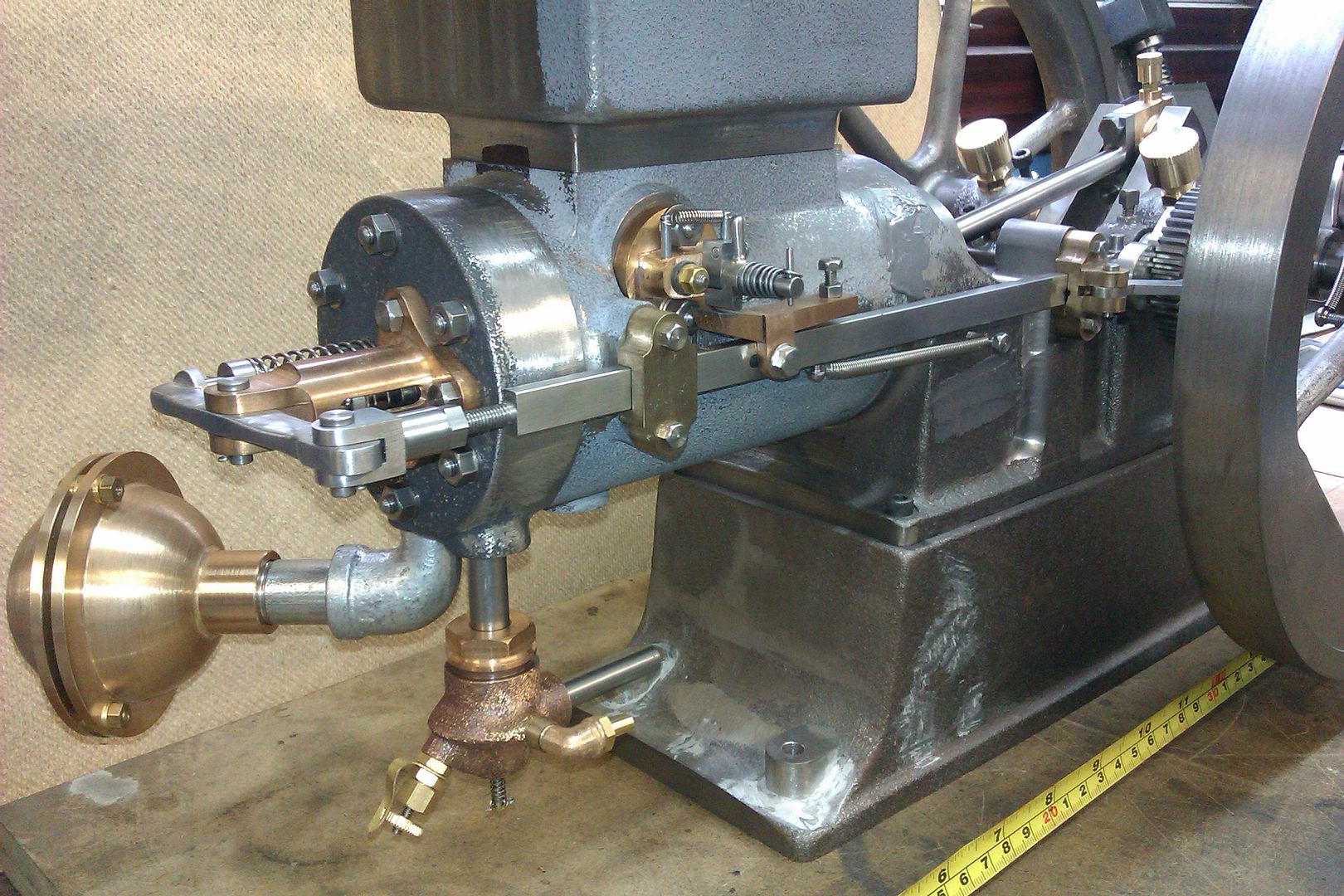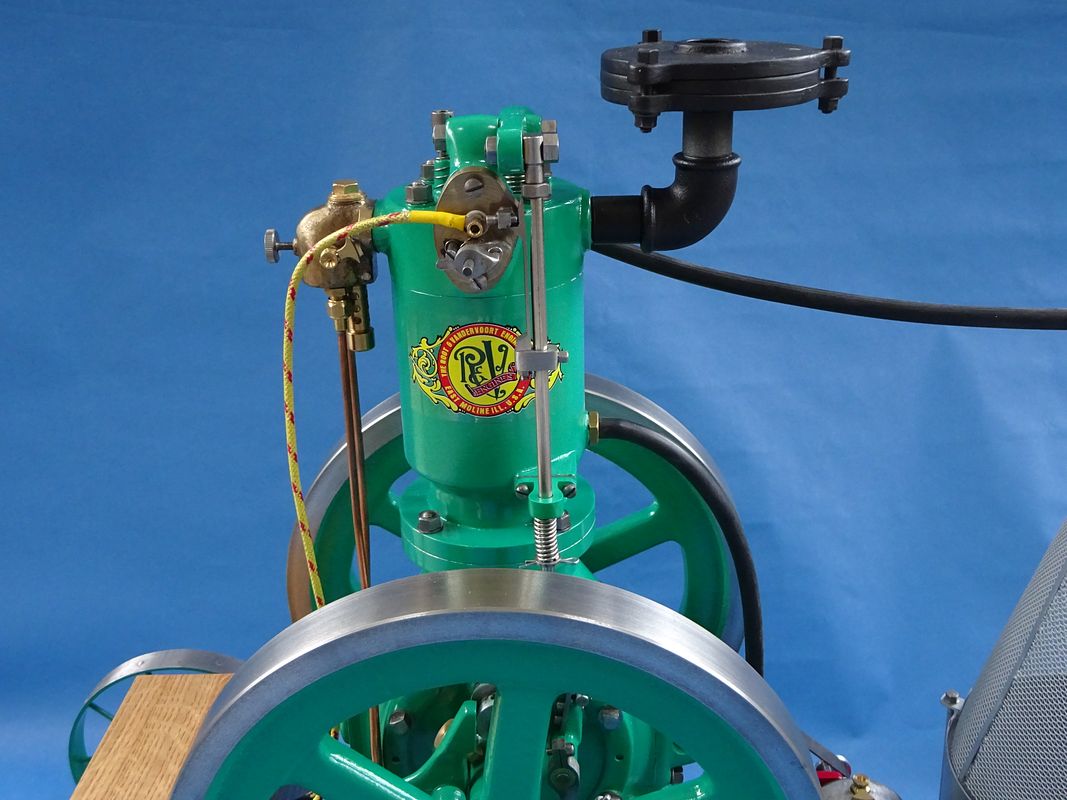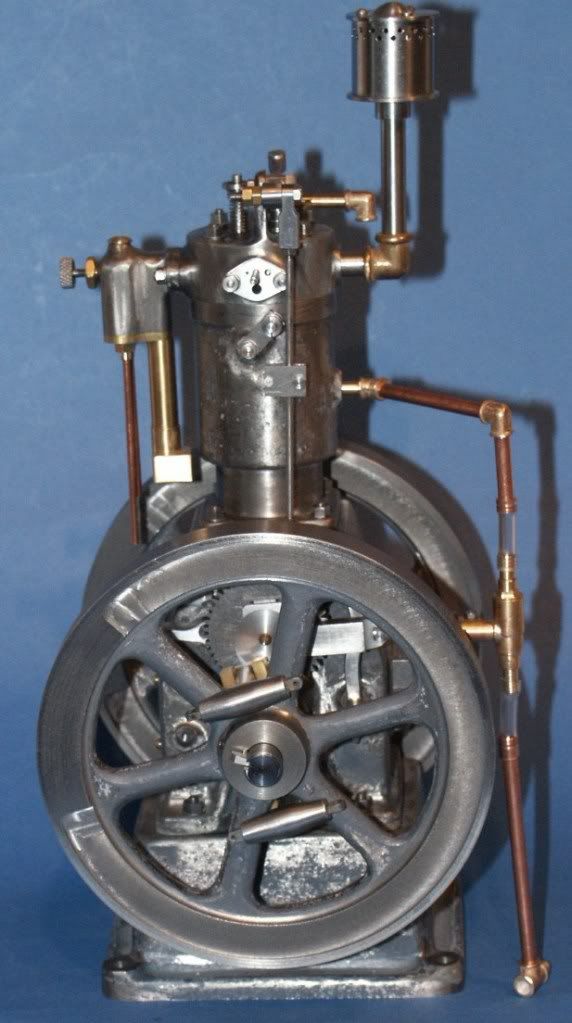This photo really shows the two-stages better, and this is really two cams, with one superimposed on top of another.
You could actually use two cams for this, but I would guess they merged the two cams into one, since there was no overlap.
The cam protrusion on the right is the ignitor cam.
The cam protrusion on the upper-left actuates the valve.
Once the ignitor trips, the position of that actuator is irrelevant, since it trips clear of the horizontal shaft that the cam is moving.
Edit:
From the diagram, the shaft moves about 0.15" to trip the ingnitor (0.25 - 0.4).
The shaft moves another 0.12" to the point where the exhaust valve begins to open (0.52 - 0.4).
During 75 degrees and 90 degrees there is a steep slope, and so rapid valve movement.
At 105 degrees, the roller is up on the constant plateau section, at 0.625", and remains at this constant position until after 150 degrees.
After 165 degrees, there is another steep slope to close the valve quickly at about 190 degrees.
The curve between 190 and 345 degrees is just to provide a smooth transition between these two points, and could be flat, but that would hammer the roller against the cam as it would stop and begin contact, instead of remaining in constant contact with the cam.
Edit2:
You could actually use a trip mechanism on the exhaust valve, and push and lock it in the open position, and then trip it closed in the same manner as the ignitor.
This would tend to hammer the valve against the seat, but in a Corliss, the valves are opened to a point, and then tripped suddenly closed, with a dashpot under each valve actuator to absort the impact of the valve closing suddenly.
The sudden closing of the valve in a Corliss is for efficiency, since it allows the steam to expand after an early cutoff, thus using both the pressure of the steam, and the pressure that is maintained relatively well while the steam is expanding.
Edit 3:
The slope of the curve between 15 degrees and when the exhaust valve starts to open is just a way to blend gradually from one point to another without an abrupt change in slope.
.











![DreamPlan Home Design and Landscaping Software Free for Windows [PC Download]](https://m.media-amazon.com/images/I/51kvZH2dVLL._SL500_.jpg)




![MeshMagic 3D Free 3D Modeling Software [Download]](https://m.media-amazon.com/images/I/B1U+p8ewjGS._SL500_.png)
























































